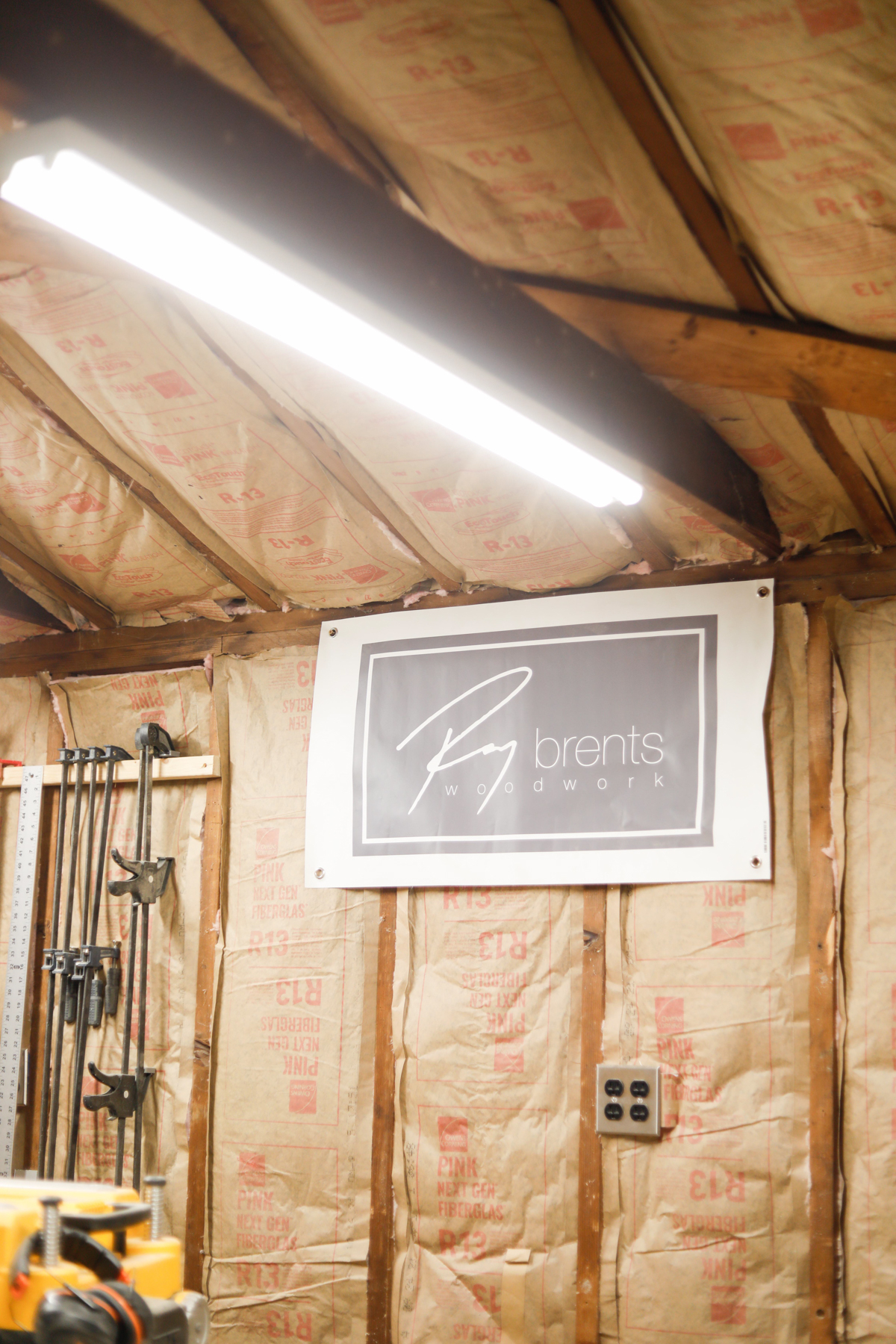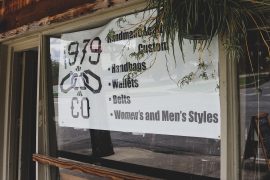Ray Brents is an Indy-based woodworker and owner of Ray Brent’s Woodwork Co. Focusing on high-quality materials and thoughtful, durable contraction, Brents’ work is guaranteed to stand the test of time while elevating any space, big or small. Check out his work on his website, Instagram, or on Etsy.

What do you make? How long have you been doing this?
2016 is when I started. Basically, I got out of school and didn’t really have the money to pay for a bunch of furniture, and I knew I was handy. I wanted to go ahead and build my own things. The first thing I built was a TV stand, which I still have and use today. I think the second thing I built was actually a computer desk. I got started there. People saw my posts on social media and started requesting things for me to build for them.
Do you have any retail locations where people can buy your products?
Not brick and mortar, no. No retail locations currently.
Who and or what influences your design style?
I really like having a Pinterest board, I can tell you that. I go online and I search different styles of woodwork, specifically the farmhouse styles. I prefer the rustic-looking type of woodwork. My favorite types of furniture to make are tables, dining tables with benches, coffee tables, end tables, things like that. Those are my favorite and what I say I specialize in. Wine holders and wine racks are trademark pieces of my business. Those are great because they’re products that I can actually display when I’m going to shows or festivals.
What comes first to you, the design materials or the design concept?
More so the concept. I’ll see something that I like, and from there I’ll pick and choose if I want to incorporate different metals into the piece–such as metal legs and railing on some cabinets or shelving.
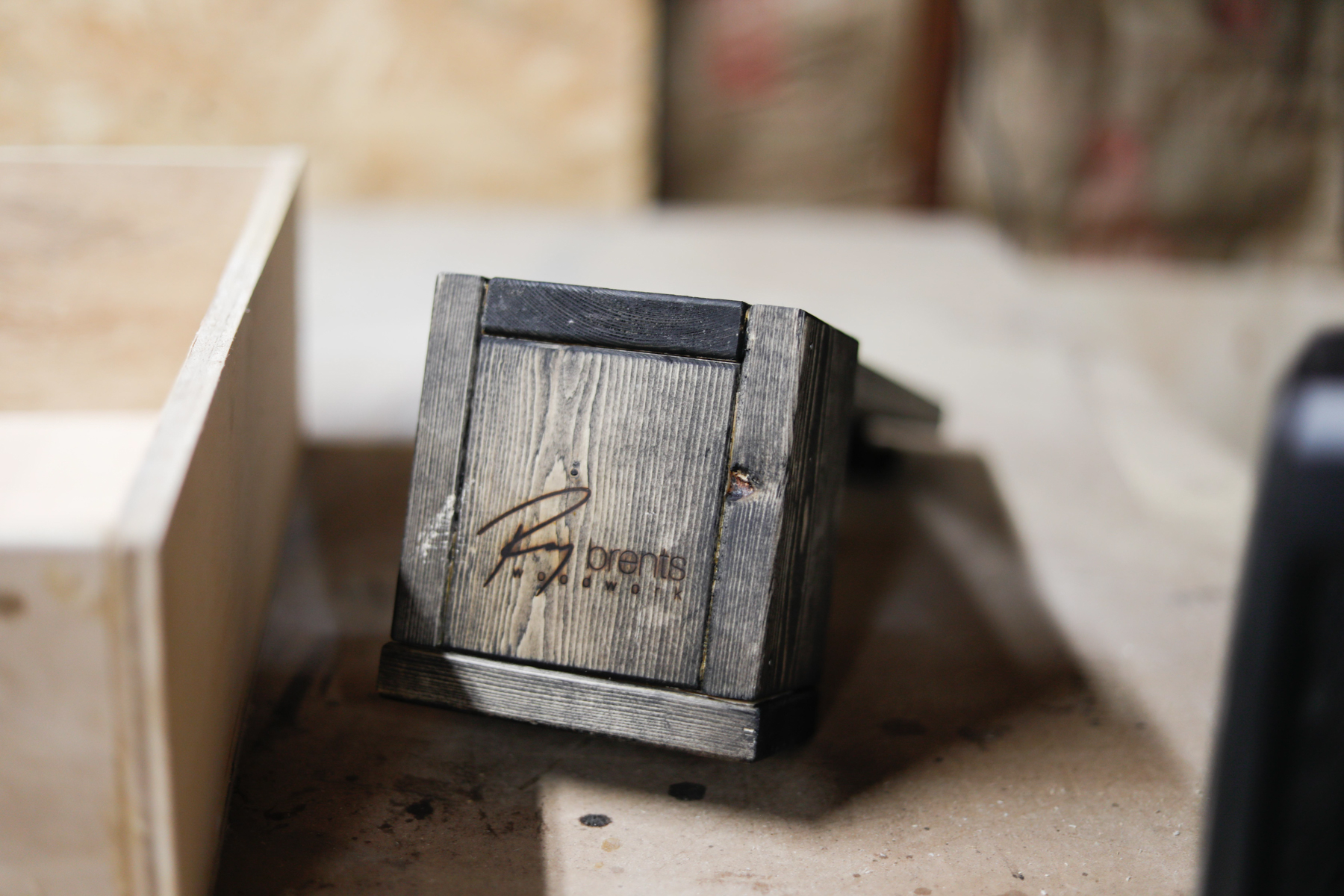
Could you describe the process of creating a piece from conception to finish?
It starts with a picture in your mind. What I do is, honestly, I just kind of just sit and think about how I’m going to assemble it. Then I will sketch it out on my computer, to get a feel for how I’m going to actually design the piece in terms of measurements and things like that. After I’ve really thought about it, actually jotted it down on paper or sketched it out virtually, I will determine what materials to use. Then at that point after I’ve figured out the materials and the measurements, I’m off to Lowe’s, Home Depot, or my local hardware store that has more unique types of woods.
What is your favorite tool?
I would say the drill. It brings everything together, which is awesome when you’re trying to connect everything.
Describe a piece you’ve created that you’re most proud of, and what is special about it?
I love to create a space or a product, where people are going to use that product on a daily basis and it’s going to now become a part of your home. That’s something that I really, really love about what I do. Therefore, the mudroom tree I built was a favorite of mine. The client loved it so much that she actually sent me a picture of her kids sitting on it. And I was just like, “This is great. This is exactly what I was going for!” That would be one of my proudest moments that I’ve had in relation to a product I’ve built. One other favorite project of mine would be a seven foot X-Shelf that I built. Basically, they sent me a picture of what they wanted, or what they looked at, and then I created it. A lot of customers usually have an idea of what they want, but when customers try to actually sketch things out for me, it honestly is not always the most helpful, because not everyone’s an artist. Usually I just have them send me a picture from Pinterest or Etsy to get a feel for what it is they’re looking for. At that point, I just put my own little creative spin on it sometimes, while still always giving them exactly what they’re looking for.
Describe what the commissioning process is like, and what are the best and worst aspects of doing commissions.
So the process typically begins when somebody contacts me. They’ll ask me, “Hey, are you able to build something like this?” Usually, they send me a picture. I tell them yes or no. And if it’s yes, of course, I’ll tell them, “Let me get back to you in about a day or so in regards to pricing.” I’ll get back to them, give them the price and ask them if they’re good with the price. If they want to move forward, then I’ll send them an invoice. At that point, there is a deposit that they will put down. It all depends on the cost of the materials. If it was a $1,000 table that they’re going to want, they’re going to need to put down around $250-$300 to get the process started in regards to materials, labor fees, and things like that.
What would you say is the best and worst aspect of the commission process?
Having people really value your work, both literally and figuratively, is one of my favorite parts of the job for me personally. On the flip side, it’s really frustrating when people expect my prices to be comparable with those at Ikea or Wayfair. This is handmade furniture made from high-quality wood with high-quality construction. When people don’t understand the difference between big box stores and the work I produce, it’s tough. All too often, people underestimate the value of handmade work.
What advice would you give to aspiring creatives like yourself?
Don’t think too much about how you’re going to do it, or how much things are going to cost. Honestly, you can start with the basic tools possible. You can even start with a handsaw if you want to… just get settled. Don’t think too much about “What I am going to be able to create?” or “Are people going to like the same things that I like?” Just get started. Sometimes you do get sort of stuck though. I’ve gotten stuck in other aspects of my life just thinking too much about “Is that going to be something I’m going to want to do?” I just found something. I knew I needed something, so I started the process.
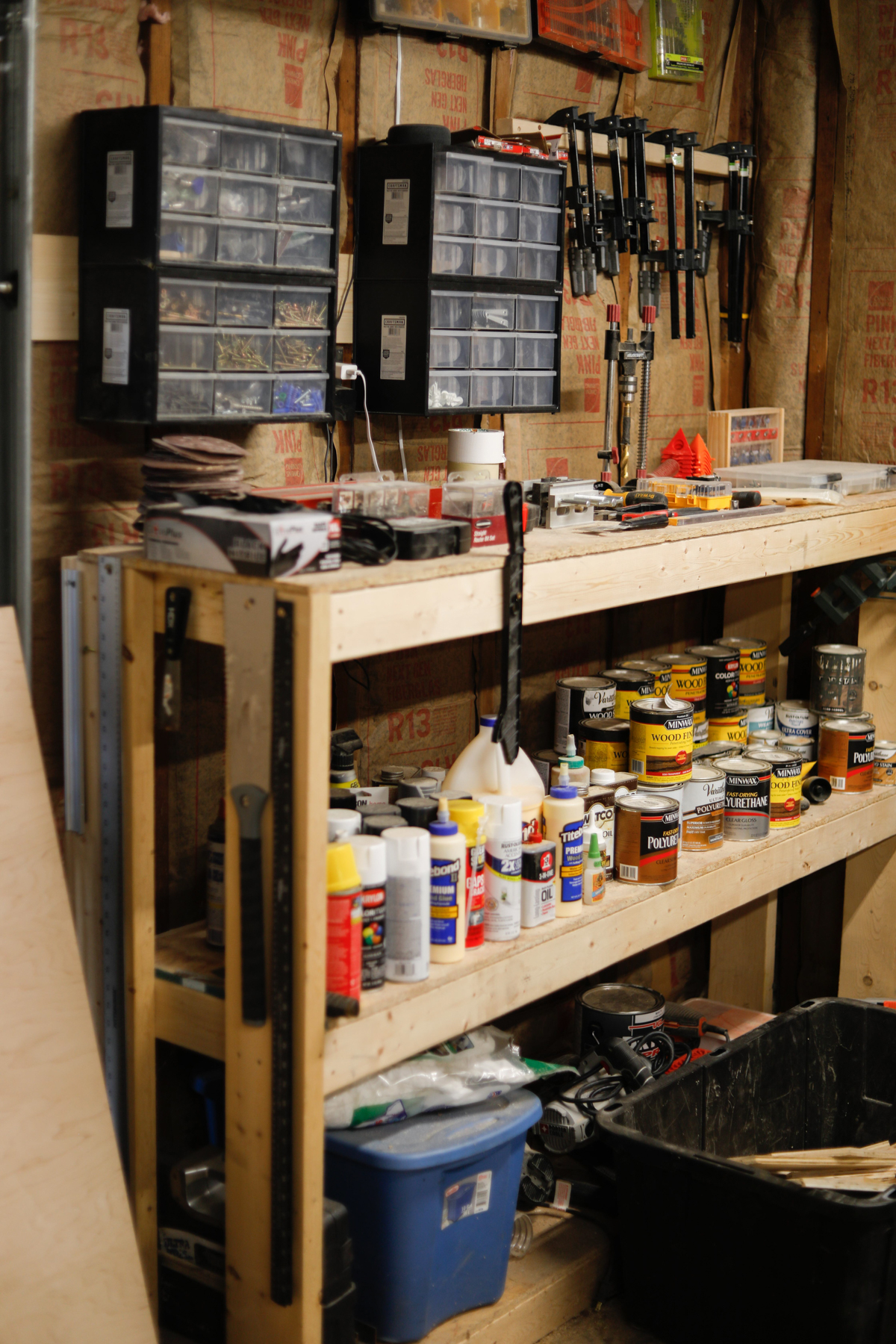
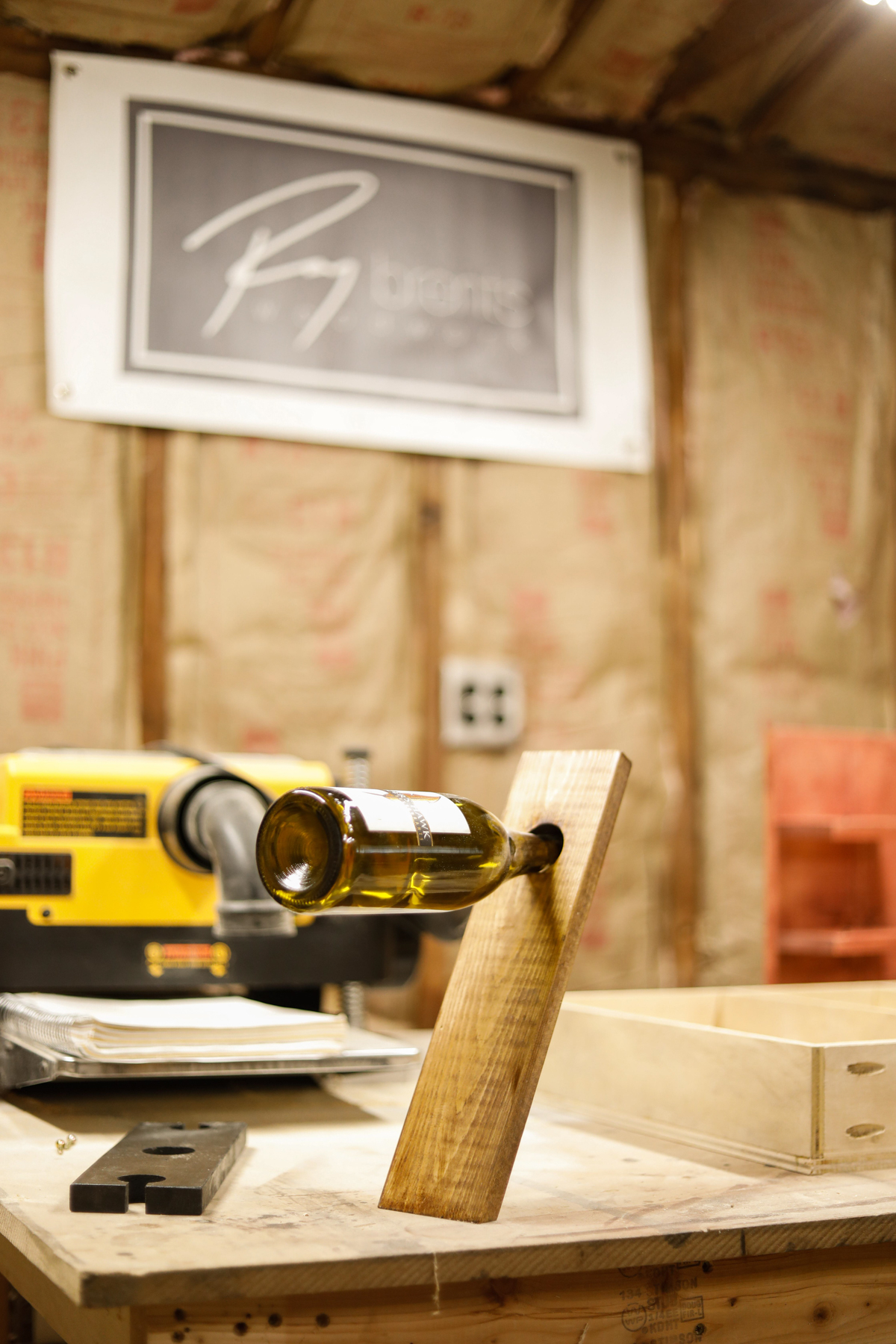
What is one thing that the creative/design community can do in Indianapolis to help grow an audience for this type of work?
That’s a good one. I’m trying to think, because there are so many things that come in handy like festivals and meetups. I would say facilitating a space that allows people to work on things that I can work on is especially important. Co-working in spaces set up for people that actually do create things, like physically create products, is always a great opportunity for me.
Do you have a dream commission or client?
I actually had one and didn’t get it, because she didn’t like the quote. It was a restaurant that wanted thirteen walnut tables. I gave them the price and they were like, “Oh, that’s way too much” … you asked for the highest priced wood in the states! [laughs]. In regards to another dream client or commission, I would say a commission of tables for restaurants. Like I said, it kind of goes back to the tables being my number one thing I love to create, just given that it creates a space for people to come together and to communicate on a daily basis. A celebrity would be great because it would garner great exposure, I suppose. Actually Nick Offerman from Parks and Recreation would actually be an awesome client. He actually does woodwork himself, so it would be super cool to just talk with him about his process and how he goes about things.
What makes your work different from anyone else’s?
The one thing that really separates me is that with any large item, I always want to make it in a way that’s especially user-friendly in regards to assembly/disassembly. If you need to get a very large dining table into a room, I specifically engineer it to be very movable. You have certain spots that have bolts or screws that they go into; with my pieces you can easily take those out and back in, and it’s not going to show wear and tear even if you do it say 10, 15, 20 times. When you move, it’s not going to hurt the wood or anything like that.
What has been the most rewarding memory in your business?
I went to a festival in Chicago called the Silver Room Block Party. It’s a festival mostly featuring African-American entrepreneurs selling their products that they’ve created themselves. It’s an event that has attracted 40 to 50,000 people on average located in Hyde Park, Chicago. I just love interacting with the people that attend the event. We get to talk to so many different people across the country, and out of Chicago, and get a warm welcome and are appreciated for the work we do. I’ll be honest, there’s not too many Black woodworkers around. I mean, I mostly see white people doing woodwork. It’s really good to get that type of acknowledgement and recognition from people that look like me.
